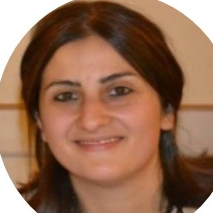Sustainable Reuse of Municipal Wastewater: Innovations and Challenges
A special issue of Sustainability (ISSN 2071-1050). This special issue belongs to the section "Environmental Sustainability and Applications".
Deadline for manuscript submissions: closed (15 September 2022) | Viewed by 13381
Special Issue Editors
Interests: water and wastewater treatment; resource recovery; environmental sustainability; nutrients recovery; membrane technologies; water reuse
Interests: water and wastewater treatment; resource recovery; environmental sustainability; biorefinery; environmental impact assessment
Interests: water and wastewater treatment; resource recovery; environmental sustainability; anaerobic digestion; composting; contaminants of emerging concern
Special Issue Information
Dear Colleagues,
Changes in the climate toward warmer and drier conditions together with the over-demand for water will result in serious impacts on available water resources and create water stress. In addition to depleting the quantity of available water resources, climate change is also expected to contribute to deteriorating the quality of surface and groundwater (i.e., salinization, contamination). This will eventually boost the demand for finding local solutions and using nonconventional water resources, especially in water-scarce areas where the lack of good quality of irrigation water is already limiting agriculture. At this point, reclaimed wastewater reuse can help to address these issues, but its potential remains largely untapped from a practical and legislative point of view. In fact, the reuse of reclaimed water relies on many types of advances not only related to technological approaches, but also health, socioeconomic, and legal aspects.
Accordingly, this Special Issue welcomes research and review papers related to sustainable municipal wastewater treatment and reuse in an integrated approach. The collection of relevant papers under this umbrella can help to maximize the environmental benefits and minimize the undesired impacts of reclaimed water reuse.
Potential topics include but are not limited to the following:
- Innovation and optimization in water reclamation;
- Novel technologies to valorize municipal wastewater;
- The need to consider contaminants of emerging concern in wastewater treatment to enable water reuse;
- Pathogen-associated microbial risks;
- The role of membrane-based wastewater technologies;
- Water–energy–food–climate–ecosystem nexus;
- Models, tools, and possible digital solutions to WWTP and reclamation managers;
- Life cycle-based tools (LCA, LCC) to provide a holistic environmental and economic assessment sustainable reuse;
- Plant and soil studies on agricultural reclaimed water reuse;
- Precise irrigation and smart agriculture for reclaimed water;
- How to overcome legislative barriers for reclaimed water reuse;
- Safety aspects and planning of treated wastewater use;
- Socioeconomic impact of water reuse and public acceptance.
Dr. Çağrı Akyol
Dr. Anna Laura Eusebi
Dr. Nicola Frison
Guest Editors
Manuscript Submission Information
Manuscripts should be submitted online at www.mdpi.com by registering and logging in to this website. Once you are registered, click here to go to the submission form. Manuscripts can be submitted until the deadline. All submissions that pass pre-check are peer-reviewed. Accepted papers will be published continuously in the journal (as soon as accepted) and will be listed together on the special issue website. Research articles, review articles as well as short communications are invited. For planned papers, a title and short abstract (about 250 words) can be sent to the Editorial Office for assessment.
Submitted manuscripts should not have been published previously, nor be under consideration for publication elsewhere (except conference proceedings papers). All manuscripts are thoroughly refereed through a single-blind peer-review process. A guide for authors and other relevant information for submission of manuscripts is available on the Instructions for Authors page. Sustainability is an international peer-reviewed open access semimonthly journal published by MDPI.
Please visit the Instructions for Authors page before submitting a manuscript. The Article Processing Charge (APC) for publication in this open access journal is 2400 CHF (Swiss Francs). Submitted papers should be well formatted and use good English. Authors may use MDPI's English editing service prior to publication or during author revisions.
Keywords
- circular bioeconomy
- digitalization
- energy and material recovery from municipal wastewater
- irrigation/fertigation
- municipal wastewater treatment
- water–energy–food–ecosystem–climate nexus
- water re-use
Benefits of Publishing in a Special Issue
- Ease of navigation: Grouping papers by topic helps scholars navigate broad scope journals more efficiently.
- Greater discoverability: Special Issues support the reach and impact of scientific research. Articles in Special Issues are more discoverable and cited more frequently.
- Expansion of research network: Special Issues facilitate connections among authors, fostering scientific collaborations.
- External promotion: Articles in Special Issues are often promoted through the journal's social media, increasing their visibility.
- Reprint: MDPI Books provides the opportunity to republish successful Special Issues in book format, both online and in print.
Further information on MDPI's Special Issue policies can be found here.







